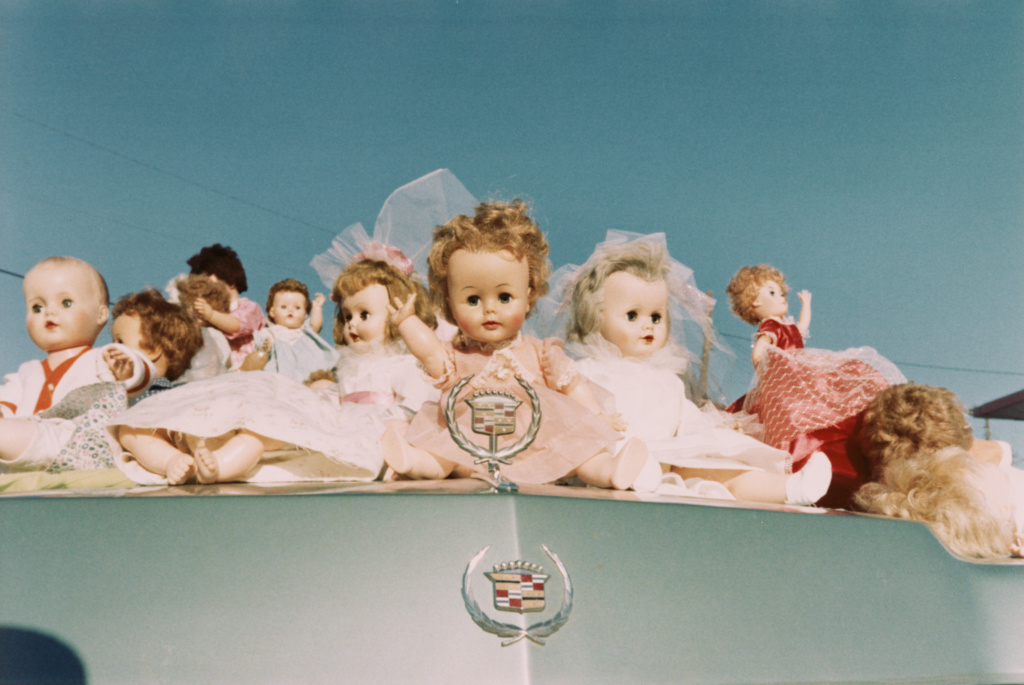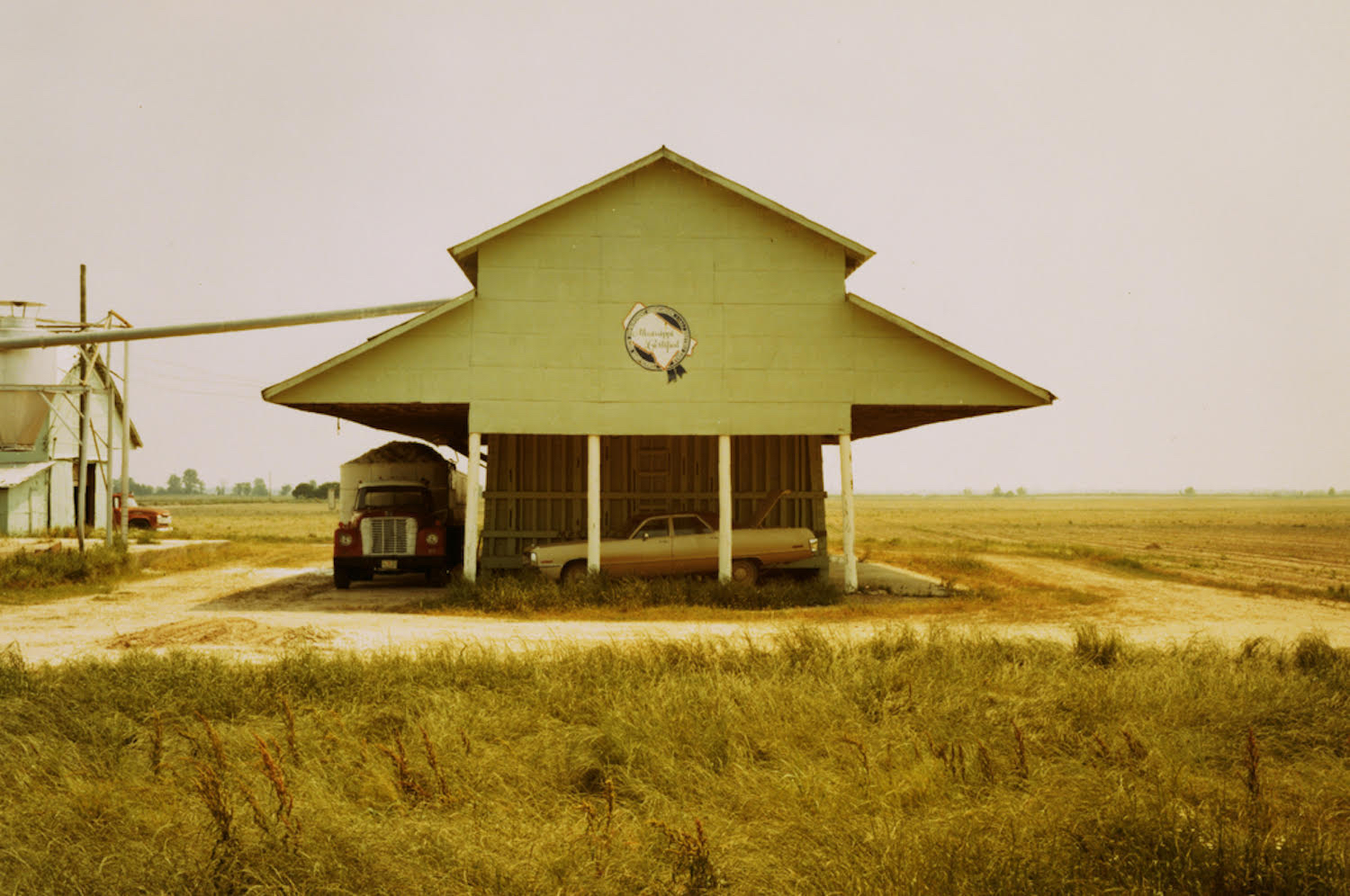A dreamy road trip through the Mississippi Delta
- Text by Miss Rosen
- Photography by William Eggleston

Hailing from Memphis, Tennessee and raised in Sumner, Mississippi, American photographer William Eggleston is a poet of the American South. His vivid images of daily life helped establish colour photography as a medium of fine art during the ’70s.
Gallerist Rebekah Jacob also grew up around the Mississippi Delta, and recalls seeing the photographer in her youth. “Eggleston was somewhat ethereal but evident in the Delta, cruising around and taking pictures,” she recalls.
“You would often see his car perched just off the road and sometimes spot him walking along the paved roads or wandering out in the fields. Some thought he was crazy, others didn’t care to wonder. But it was strange to see anything other than field hands or farmers speckled out in the middle of cotton fields. And there he was, sweeping a camera and capturing the soul of the land, in perfect aperture.”

Minnows (On Highway 61 through the Mississippi Delta), 1972

Farm in the Mississippi Delta, 1970
While many dealers and collectors chase Eggleston dye-transfer photographs, Jacob prefers to focus on his chromogenic work: the intimate, small format images the artist made while exploring rural towns along the Mississippi River. In the new exhibition, William Eggleston’s Snapshots — the c-print, Jacob spotlights these intuitive interpretations of the land they both share.
“Eggleston was a link from the early 20th century artists to the present, modernising the medium in terms of printing and the use of colour,” Jacob says. “Although innovating the medium, he carried the voices of the Delta with integrity, patience, and sensitivity. He photographed the place and its peoples by sweeping the camera, so it has always been fascinating to see ‘my land’ variously angled and tightly formatted – like riding in a car with your head titled against its window.”
Jacob met Eggleston while earning a Masters in Art History at the University of Mississippi, popularly known as “Ole Miss.” “Mr Eggleston arrived true to his reputation,” she remembers. “A southern aristocrat, he was dapper, wearing a high-end sports coat, buttoned shirt, and slacks. He was polite yet mercurial.”

Dolls, Memphis, Tennessee, 1972

Hanover Sign, Oxford, Mississippi, 1971
“He walked in with a small stack of photographs and placed them on a positioned table. He seemed to be magnetised by the piano, another mastered medium and passion. His innovative arrangement of classical music, played by memory with no score, echoed throughout the space so that few words could be heard, but our eyes were in sensory overload.”
Although many critics outside the South didn’t understand what Eggleston was doing at the time, Jacob recognises the significance of his work as a documentarian of a new typography of the South in the 1970s. “He worked to capture the loneliness, isolation and changes brought about by suburbs and other physicalities of American society and culture,” she says.
“New suburbia was descending upon the South at the time, and Eggleston expressed this changing South by focusing on parking lots, shopping malls, neon signs and other ordinary objects in a consumer world. Eggleston is considered a titan in the photography world – a photographer with a pioneering eye for capturing beauty in the ugly and mundane.”

Gulf Sign (Mississippi Delta) from Southern Suite, 1972

Untitled (Martin Luther King, Robert F. Kennedy, John F. Kennedy ; decanters in bar), 1972

Near Minter City and Glendora, Mississippi (Mississippi Delta), 1969-70
William Eggleston’s Snapshots — the c-print was on view at the Rebekah Jacob Gallery.
Follow Miss Rosen on Twitter.
Enjoyed this article? Like Huck on Facebook or follow us on Twitter.
Latest on Huck

Clubbing is good for your health, according to neuroscientists
We Become One — A new documentary explores the positive effects that dance music and shared musical experiences can have on the human brain.
Written by: Zahra Onsori

In England’s rural north, skateboarding is femme
Zine scene — A new project from visual artist Juliet Klottrup, ‘Skate Like a Lass’, spotlights the FLINTA+ collectives who are redefining what it means to be a skater.
Written by: Zahra Onsori

Donald Trump says that “everything is computer” – does he have a point?
Huck’s March dispatch — As AI creeps increasingly into our daily lives and our attention spans are lost to social media content, newsletter columnist Emma Garland unpicks the US President’s eyebrow-raising turn of phrase at a White House car show.
Written by: Emma Garland

How the ’70s radicalised the landscape of photography
The ’70s Lens — Half a century ago, visionary photographers including Nan Goldin, Joel Meyerowitz and Larry Sultan pushed the envelope of what was possible in image-making, blurring the boundaries between high and low art. A new exhibition revisits the era.
Written by: Miss Rosen

The inner-city riding club serving Newcastle’s youth
Stepney Western — Harry Lawson’s new experimental documentary sets up a Western film in the English North East, by focusing on a stables that also functions as a charity for disadvantaged young people.
Written by: Isaac Muk

The British intimacy of ‘the afters’
Not Going Home — In 1998, photographer Mischa Haller travelled to nightclubs just as their doors were shutting and dancers streamed out onto the streets, capturing the country’s partying youth in the early morning haze.
Written by: Ella Glossop